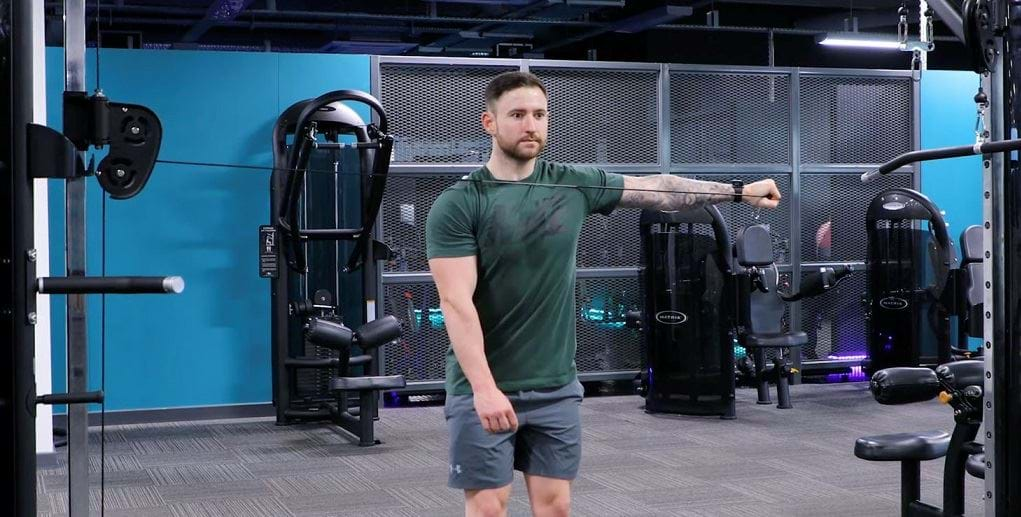Cable Rear Delt Flyes
What Is A Cable Rear Delt Fly

The cable rear delt fly is a single arm exercise that challenges the rear delts, with support from the traps, lats, and rhomboids. Strengthening these muscles can help to incresae overall shoulder and back strength and improve posture.
By using a cable machine, this rear delt fly variation allows for tension to remain on the rear delts throughout the entire exercise and provides a greater challenge during the eccentric portion of this movement compared to the dumbbell version. Cable rear delt flyes also do not require a hip hinge to adopt the correct position, which can be helpful for those who struggle to maintain form and isolate the delts with a dumbbell rear delt fly.
Check out our other rear delt exercises: rear delt flyes, face pulls, Y raises
Commonly Asked Questions On Cable Rear Delt Flyes
Cable rear delt flyes are a good exercise for targeting the rear deltoids and upper back muscles and helping to eliminate imbalances between the front and back of the body. Using a cable machine for this exercise means the muscles always remain under tension which can help to build strength and muscle mass more effectively, and as a unilateral exercise, the cable rear delt fly can help to improve imbalances between the two sides too.
It is difficult to move a heavy load with cable rear delt flyes as the movement is created by a small muscle group. Choose a weight that is challenging but controllable and allows for the full range of motion with good form, as this will get the most benefit while minimising stress on the shoulder joint.
The cable rear delt fly and bench and seated rear delt fly are both good exercises for working the rear delt, and neither is necessarily better than the other. There are differences between the two, and which variation you choose will depend on what you want to focus on.
Cable rear delt flyes have a greater time under tension compared to dumbbell flyes due to the differences in the centre of gravity, providing a greater challenge to the rear delts throughout the exercise. With the seated rear delt fly, the chest is supported which helps to prevent other muscles from taking over the rear delts during this movement.
If you find other muscles compensating during the cable version, you may prefer the bench rear delt fly. You could also include both in your routine.
Cable Rear Delt Fly Tips
To ensure the rear delts are targeted and shoulder stress is minimised in the cable rear delt fly, it’s important to maintain a slight bend in the elbow and ensure the correct line of pull. Set up the cables at head level and think about pulling the cable back at shoulder height.
To sustain a stable torso throughout the movement, your oblique muscles will need to be engaged. If you’re finding your torso begins to twist lighten the load or use your other hand to hold onto the cable machine for further stability.
How to do Cable Rear Delt Flyes
Set up a cable at head height, you do not need to add a handle attachment for the cable rear delt fly.
Grip the end of the cable using a pronated grip so that your palms are facing downwards and take a small step to the side of the cable.
Brace your core and ensure your torso remains stable as you pull the cable across the body from the middle of your chest until the arm is extended out to the side.
Slowly allow your arm to return to the starting position before commencing the next rep.
Complete all reps on one side before swapping arms.
If you’re not sure if any of the above exercises are suitable for you, please consult your doctor before you start it. Need guidance on how to perform the exercise? Ask a personal trainer at your gym.